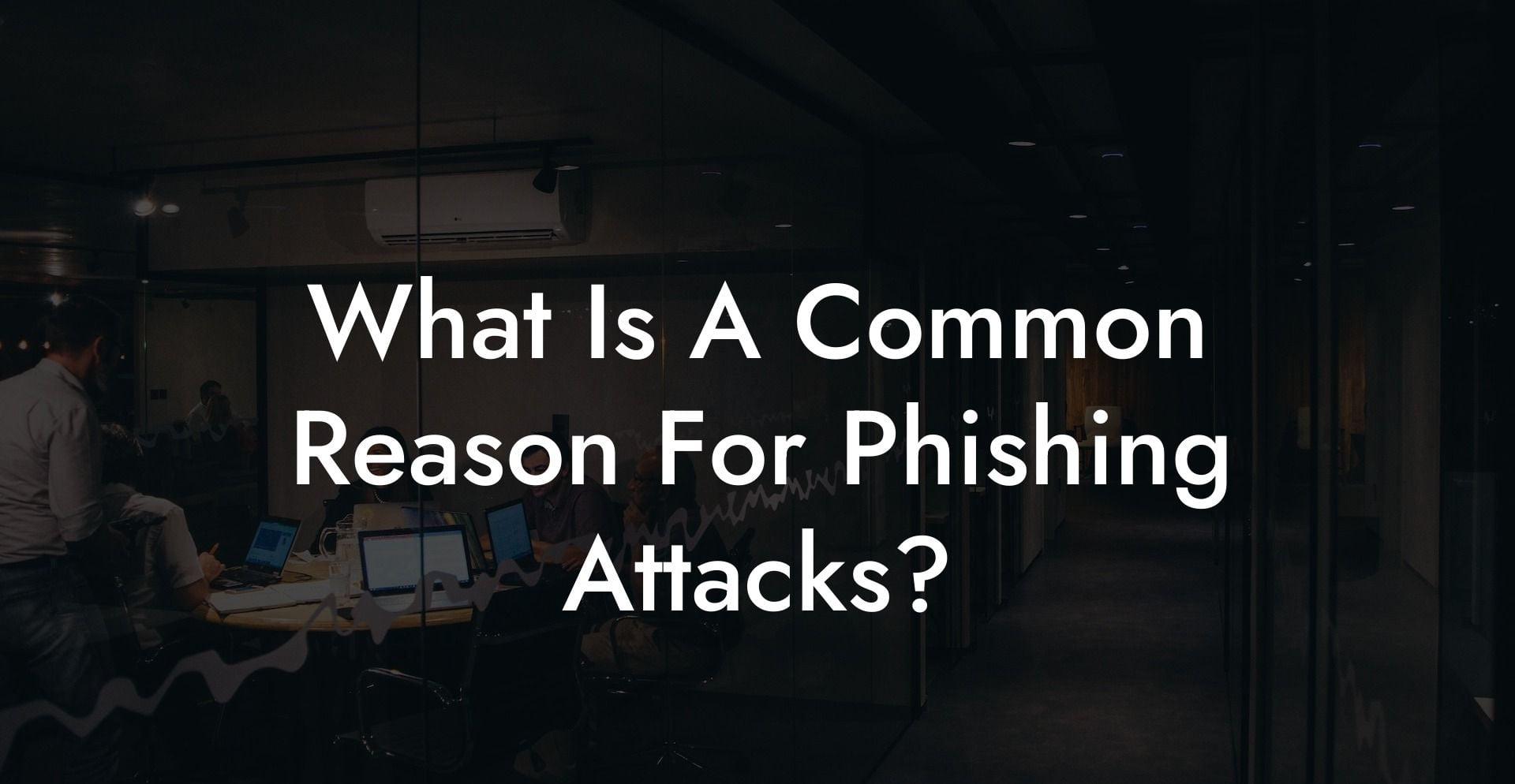Imagine receiving an urgent email from your bank, cautioning you about potential fraud on your account. You’re concerned and click on the link provided, only to find out later that the email itself was a scam, designed to steal your personal information. Welcome to the dark side of cybercrime – phishing attacks.
What Is A Common Reason For Phishing Attacks Table of Contents
What Is A Common Reason For Phishing Attacks? Examples of Phishing Attacks
As our lives continue to migrate online, the digital landscape becomes increasingly fertile ground for cybercriminals. Phishing attacks are just one form of cybercrime where these invaders prey on unsuspecting individuals and organizations. But what is the driving force behind these scams? In this comprehensive guide, we delve into the common reasons for phishing attacks, along with practical examples and tips for safeguarding yourself against this growing threat.
Why Do Phishers Phish?
Protect Your Data Today With a Secure Password Manager. Our Top Password Managers:
At its core, the motivation behind phishing attacks is a simple one: financial gain. Cybercriminals aim to manipulate their targets into divulging sensitive information, such as credit card numbers, passwords, and social security numbers, which they can then exploit for their own financial benefit. Let's take a closer look at some common reasons for phishing attacks:
1. Identity theft: Stealing personal information allows hackers to assume the identity of their victims. They can then commit various fraudulent activities, such as opening new lines of credit or filing false tax returns, leaving the victim to bear the consequences.
2. Selling information: The black market for stolen data is lucrative. Cybercriminals can sell the ill-gotten information to other criminal networks that specialize in different types of fraud or even use it for targeted marketing campaigns.
3. Corporate espionage: Phishing attacks are not limited to individuals – organizations are also at risk. Attackers may target high-value corporate data, such as trade secrets or financial information, and sell it to competitors or use it to sabotage their target's operations.
4. Ransomware: This form of malware encrypts the victim's data and demands payment for the decryption key. Cybercriminals utilize phishing emails to dupe victims into downloading and activating the ransomware.
What Is A Common Reason For Phishing Attacks? Examples of Phishing Attacks
To better understand the dangers of phishing attacks, let's explore some realistic examples:
1. The CEO Scam: A cybercriminal impersonates a high-ranking executive within a company, sending an email to the HR or Finance department requesting an urgent wire transfer or confidential personnel data. Believing the email to be a legitimate request, the employee complies, inadvertently handing over sensitive information or funds to the attacker.
2. Tax Season Scams: Hackers send phishing emails impersonating tax authorities during the tax season, requesting the victim's personal and financial information for "verification" purposes. Falling for this ruse, victims inadvertently put their sensitive data directly into the hands of the cybercriminals.
3. Love and Trust: Romance scams exploit the trust developed in online relationships. Once the cybercriminal gains the victim's trust, they may request money or personal information, citing a fabricated emergency or claiming they need help with travel expenses to finally meet in person.
Safeguarding Against Phishing Attacks
Phishing attacks might be common, but with vigilance and awareness, you can protect yourself from becoming a victim. Here are some tips to keep your information secure:
1. Verify the legitimacy of any request for personal information or monetary transactions. Be wary of unsolicited emails, and don't hesitate to contact the sender via alternate channels to confirm their identity.
2. Be cautious of suspicious links and attachments in emails. Hover your cursor over the link before clicking to check the actual URL, and only open attachments from trusted sources.
3. Educate yourself and others about phishing attacks and stay up to date with the latest cybersecurity trends.
4. Invest in reliable antivirus software and keep all your devices up to date with the latest security patches.
As you continue to navigate the digital seas, remember to stay vigilant against phishing attacks. By becoming familiar with the tactics used by cybercriminals and practicing good cybersecurity hygiene, you can successfully fend off their attempts to lure you into their nets.
Did you find this article enlightening? Be sure to share it with others and explore our other guides on Voice Phishing to bolster your defenses against the cybercriminals that lurk within the shadows of the internet.
Protect Your Data Today With a Secure Password Manager. Our Top Password Managers:















